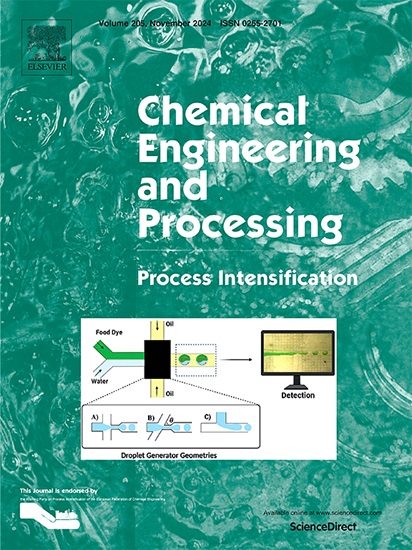基于物理的机器学习预测有机混合物的二氧化碳捕获性能
IF 3.8
3区 工程技术
Q3 ENERGY & FUELS
Chemical Engineering and Processing - Process Intensification
Pub Date : 2025-06-15
DOI:10.1016/j.cep.2025.110410
引用次数: 0
摘要
通过胺吸收捕获二氧化碳是对抗全球变暖的有效技术。创新溶剂的开发可以通过增加CO₂溶解度和减少所需吸收柱的尺寸来增强这一过程。然而,这些溶剂通常涉及物理和化学吸收机制,需要大量的实验来表征新的溶剂混合物,这减慢了创新。本研究引入了一种混合物理模型来预测CO₂在吸收混合物中的溶解度。该模型旨在通过描述单个吸收机制并结合基于物理的见解来根据混合物类型评估每种机制的贡献,从而预测新型混合物的行为。我们针对数据驱动的方法对混合模型进行基准测试,在不同混合类型的综合文献数据上对其进行训练。混合模型在测试集上的R²为0.929,优于数据驱动模型的R²为0.611。它在混合类别中也表现出较低的偏差,在预测和物理依从性方面表现出更强的稳健性,正如执行的SHAP分析所强调的那样。通过对新型溶剂混合物进行准确的数字预测,这种混合模型促进了过程强化,加速了更可持续的二氧化碳捕获技术的发展,并为更绿色的未来做出了贡献。本文章由计算机程序翻译,如有差异,请以英文原文为准。

Physics-informed machine learning predicting CO2 capture performances of organic mixtures
CO₂ capture through amine absorption is an effective technology for combating global warming. The development of innovative solvents can enhance this process by increasing CO₂ solubility and reducing the size of required absorption columns. However, these solvents often involve both physical and chemical absorption mechanisms, necessitating extensive experimentation to characterise new solvent mixtures, which slows innovation. This study introduces a hybrid physics-informed model to predict CO₂ solubility in absorption mixtures. The model is designed to predict the behaviour of novel mixtures by characterising individual absorption mechanisms and incorporating physics-based insights to evaluate the contributions of each mechanism according to the mixture type. We benchmarked the hybrid model against a data-driven approach, training it on comprehensive literature data across diverse mixture types. The hybrid model demonstrated superior performance with an R² of 0.929 on the test set, outperforming the data-driven model with an R² of 0.611. It also exhibited lower bias across mixture categories, greater robustness in predictions and their physical adherence as highlighted by the executed SHAP analysis. By enabling accurate digital predictions of novel solvent mixtures, this hybrid model promotes process intensification, accelerating the development of more sustainable CO₂ capture technologies and contributing to a greener future.
求助全文
通过发布文献求助,成功后即可免费获取论文全文。
去求助
来源期刊
CiteScore
7.80
自引率
9.30%
发文量
408
审稿时长
49 days
期刊介绍:
Chemical Engineering and Processing: Process Intensification is intended for practicing researchers in industry and academia, working in the field of Process Engineering and related to the subject of Process Intensification.Articles published in the Journal demonstrate how novel discoveries, developments and theories in the field of Process Engineering and in particular Process Intensification may be used for analysis and design of innovative equipment and processing methods with substantially improved sustainability, efficiency and environmental performance.

 求助内容:
求助内容: 应助结果提醒方式:
应助结果提醒方式:


